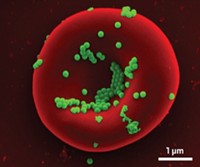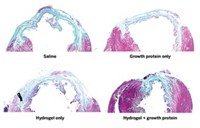Advertisement
Grab your lab coat. Let's get started
Welcome!
Welcome!
Create an account below to get 6 C&EN articles per month, receive newsletters and more - all free.
It seems this is your first time logging in online. Please enter the following information to continue.
As an ACS member you automatically get access to this site. All we need is few more details to create your reading experience.
Not you? Sign in with a different account.
Not you? Sign in with a different account.
ERROR 1
ERROR 1
ERROR 2
ERROR 2
ERROR 2
ERROR 2
ERROR 2
Password and Confirm password must match.
If you have an ACS member number, please enter it here so we can link this account to your membership. (optional)
ERROR 2
ACS values your privacy. By submitting your information, you are gaining access to C&EN and subscribing to our weekly newsletter. We use the information you provide to make your reading experience better, and we will never sell your data to third party members.
Materials
Self-Propelled Particles Trigger Clotting
Drug Delivery: Thrombin-loaded calcium carbonate microparticles produce gas bubbles that propel them into a wound site
by Celia Henry Arnaud
October 5, 2015
| A version of this story appeared in
Volume 93, Issue 39
A surprisingly simple microparticle could help doctors stop uncontrolled bleeding from serious wound sites. A team of researchers led by Christian J. Kastrup of the University of British Columbia, in Vancouver, made self-propelled microparticles that can transport thrombin—against the flow of blood—to a wound site, where the thrombin initiates blood clotting (Sci. Adv. 2015, DOI: 10.1126/sciadv.1500379). The researchers mixed thrombin-loaded calcium carbonate microparticles with the solid organic acid tranexamic acid, an agent used clinically to stabilize clots. When they applied the microparticle mixture to a test animal’s wound, the carbonate reacted to release carbon dioxide bubbles that propelled the particles into the blood vessels surrounding the wound. With these microparticles, “you don’t need to see where the damaged blood vessels are,” Kastrup says. “If you can get the microparticles in proximity of the damaged vessels, the particles will do the rest of the work. They’ll expand and push the agent throughout the blood and find the damaged blood vessels.” The researchers tested the particles in three animal models of intraoperative and traumatic bleeding.







Join the conversation
Contact the reporter
Submit a Letter to the Editor for publication
Engage with us on Twitter